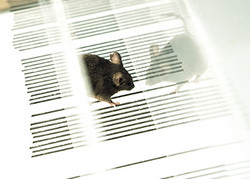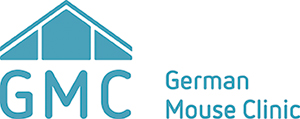Neurology
Introduction
The Neurology unit is especially interested in pathomechanisms involved in neurological and neuromuscular disorders. Movement and muscle function are impaired by several disabling human diseases like ataxias, Parkinson’ s or Huntington´s Disease, Amyotrophic Lateral Sclerosis but are also affected by altered energy metabolism or aging. For characterization of respective mouse models our tests provide an overview on basic neurological functions of mice. To explore the molecular basis for disease on one end, but also to dissect early as well as late disease attributes relevant for human diagnostic and treatment approaches we perform tests for simple neurological function, motor coordination and muscle function, but also assess elementary neuronal function e.g. in motoneuron diseases.
Screening Pipeline (A)
The primary screening includes a general examination according to a modified SHIRPA protocol (Hatcher et al, 2001), a rapid and semi-quantitative screening method for analysis of abnormal phenotypes in mice by an overall assessment of muscle, motor neuron, spino-cerebellar, sensory and autonomic functions. In addition grip strength and motor coordination (rotarod) is analyzed. Hearing assessment is performed by measuring auditory brainstem responses to different auditory stimuli (ABR).
Hypothesis-driven pipelines
Dependent on primary results and/or additional information about the mouse model more in-depth-analysis can be performed in hypothesis-driven pipelines.
B - Pipeline "Emotionality"
Swim ability - swimming ability
For other tests of this pipeline see Behavior Unit
D - Pipeline “Motor disorders”

- Analysis of deficits related to motor and neurodegenerative diseases
- SHIRPA – primary observation protocol for overall appearance
- Grip strength – muscle function
- Rotarod – basic motor coordination and balance
- Beam Walk - coordination and balance deficits on beams of different diameters
- Ladder Walk – motor coordination and grasping skills
- Vertical Pole – integration of motor coordination
- Inverted grid – muscle strength related to weight bearing
- Gait analysis – automated analysis of treadmill walking pattern by Digigait (Mousespecifics, Boston, USA)
For other tests of this pipeline see Behavior Unit
E - Pipeline “Sensory disorders”
- ABR – auditory function (anesthetized mice)
- Hotplate – sensitivity to thermal stimuli, integrity of nociceptive pathways
- Nerve conduction velocities (NCV) – sensory as well as motor neuron functions
- Seizure susceptibility (PTZ) – lowering seizure threshold by pentetrazole (PTZ) uncovers increased seizure susceptibility
- Elektroencephalography (EEG) – telemetric surface EEG
N - Pipeline “General neuro-behavioural assessment”
- SHIRPA – primary observation protocol for overall appearance
- Grip strength – muscle function
- Rotarod – basic motor coordination and balance
- ABR – Auditory function (anesthetized mice)
- Beam Walk - coordination and balance deficits on beams of different diameters
- Ladder Walk – motor coordination and grasping skills
- Gait analysis – automated analysis of treadmill walking pattern by Digigait (Mousespecifics, Boston, USA)

